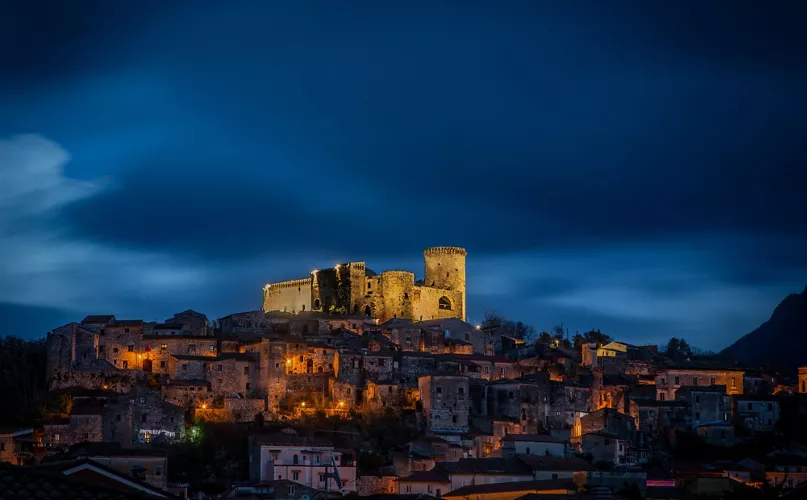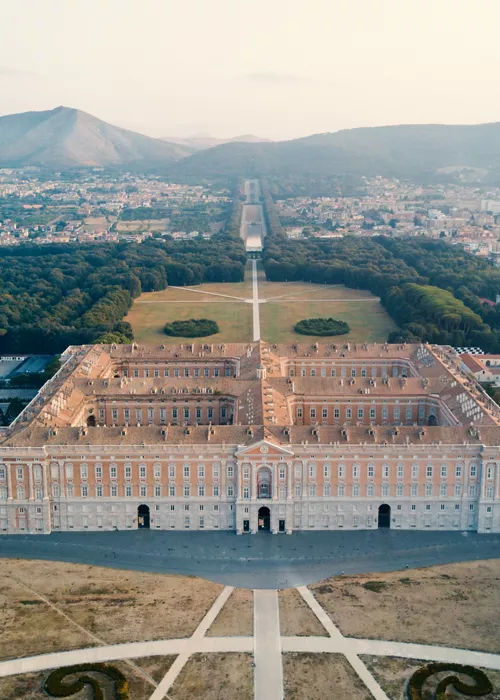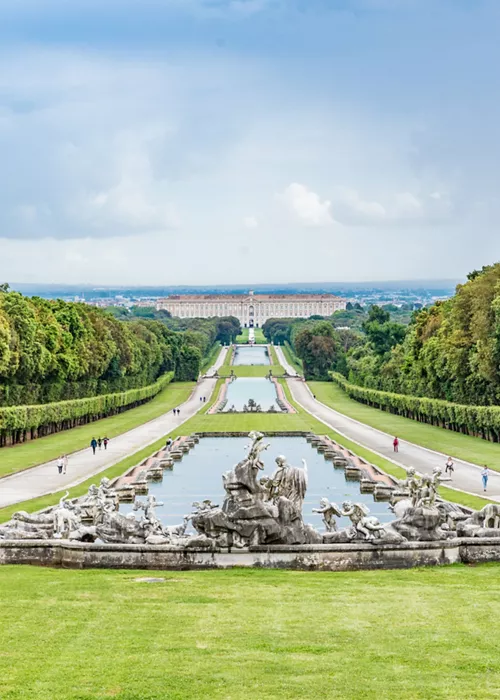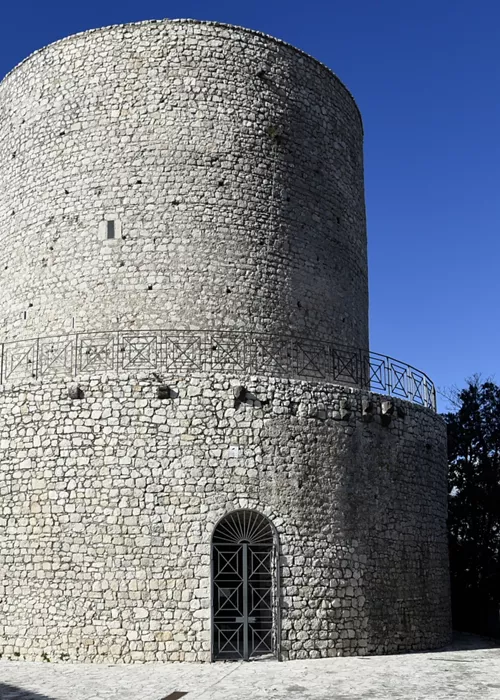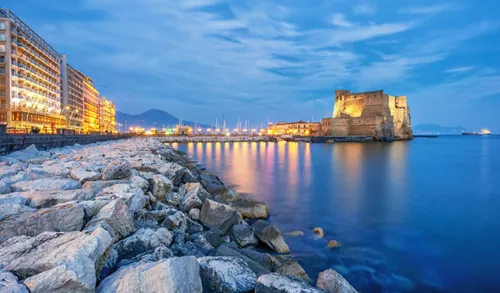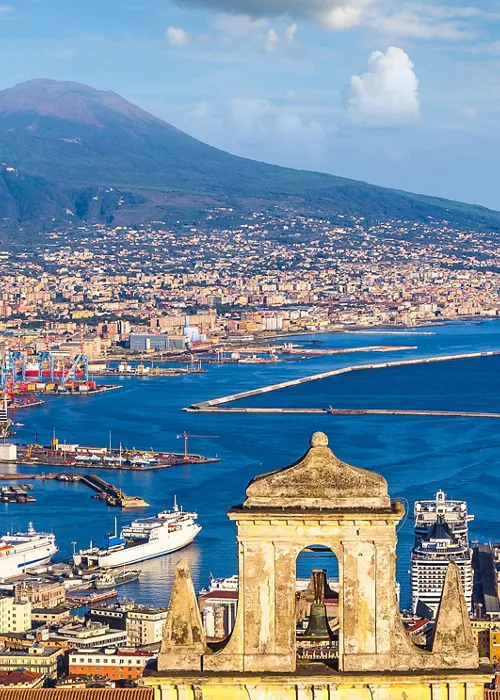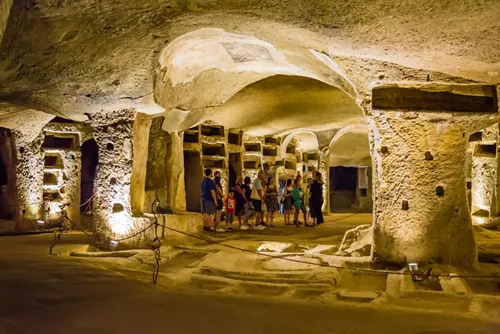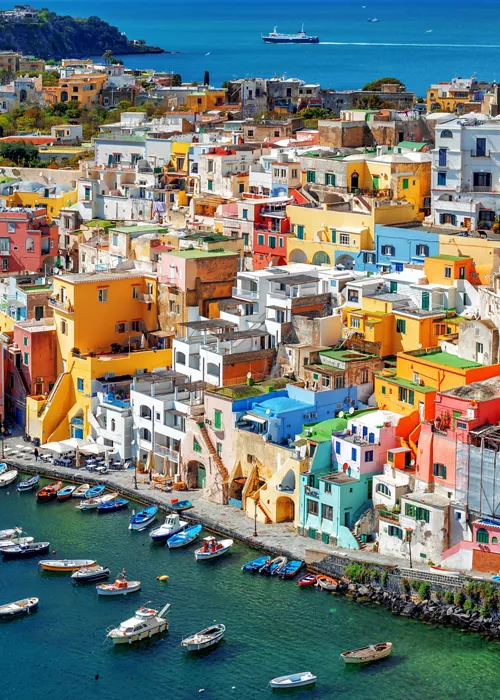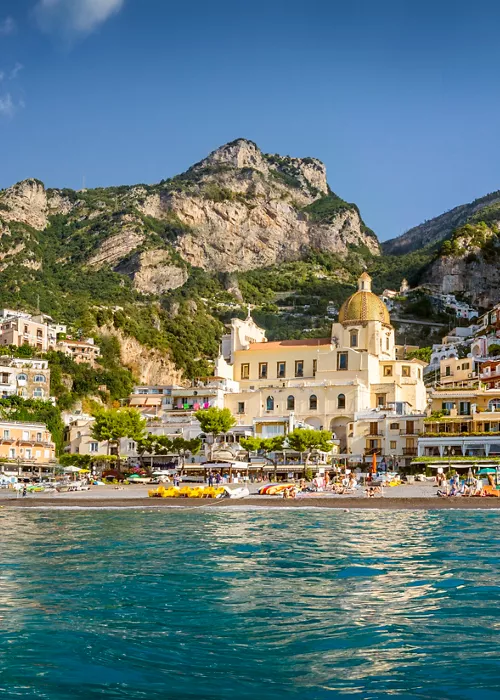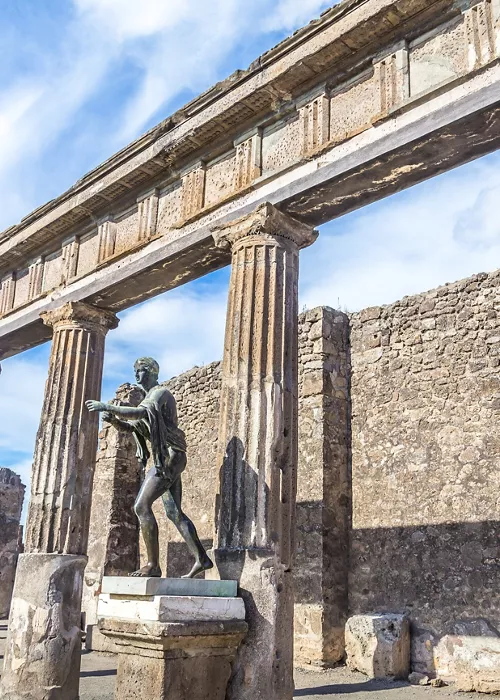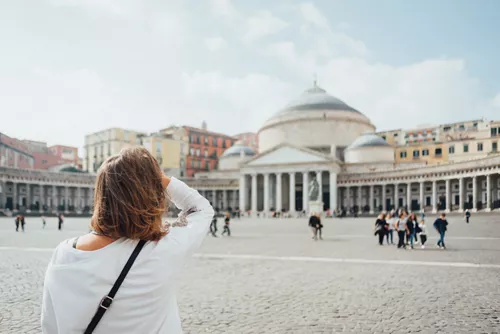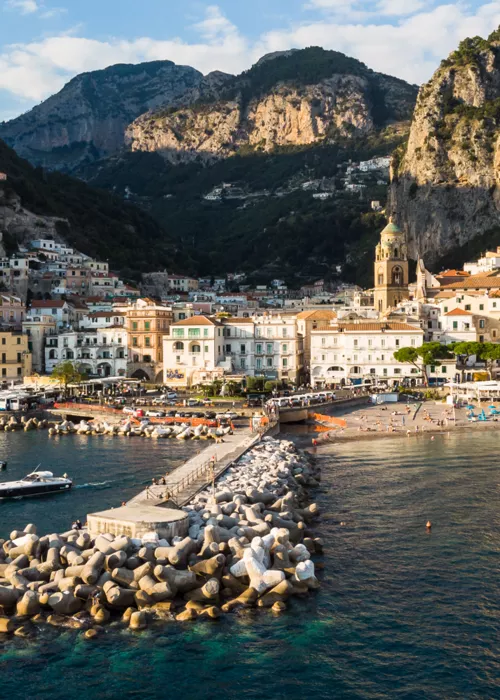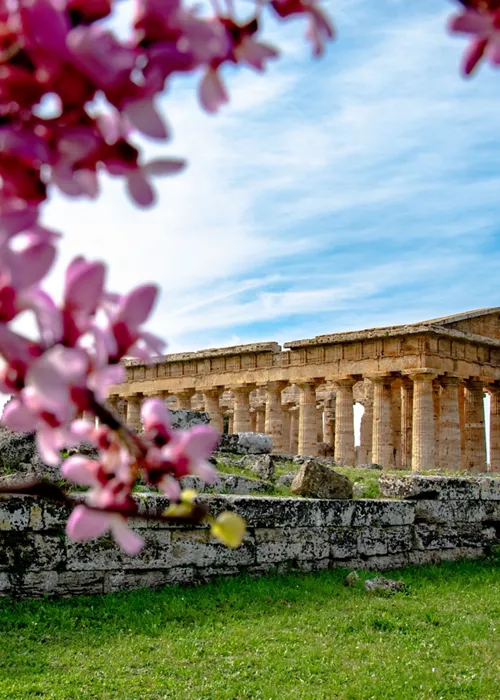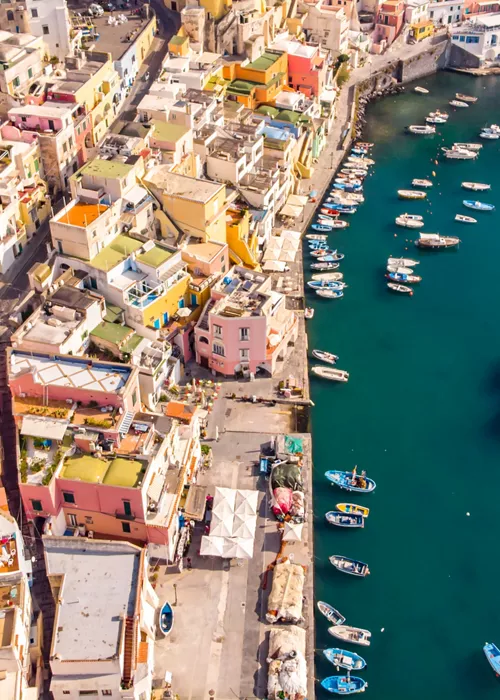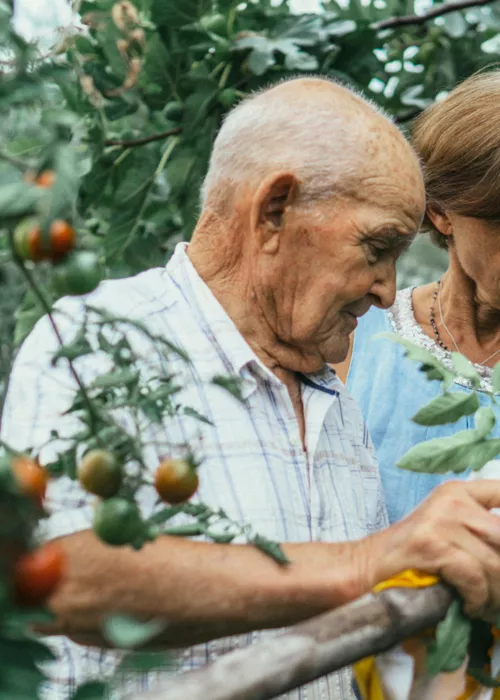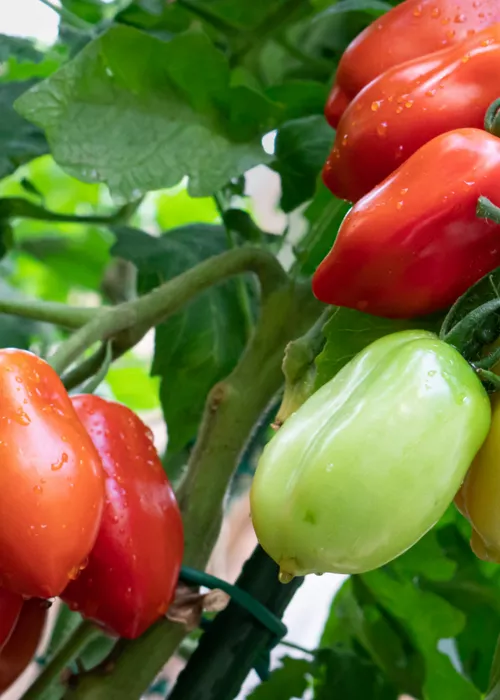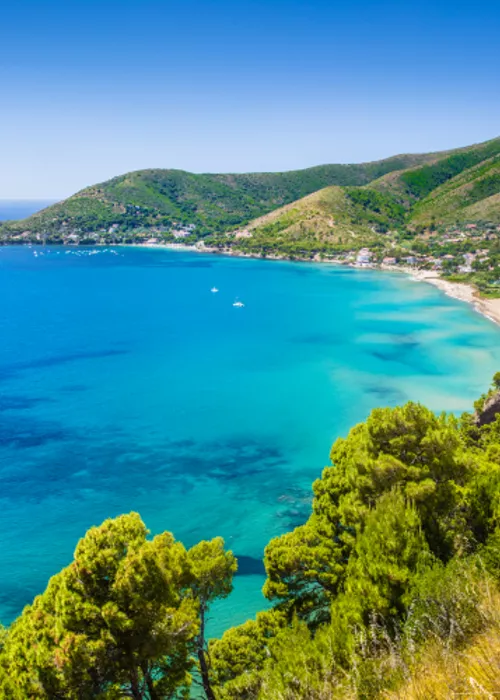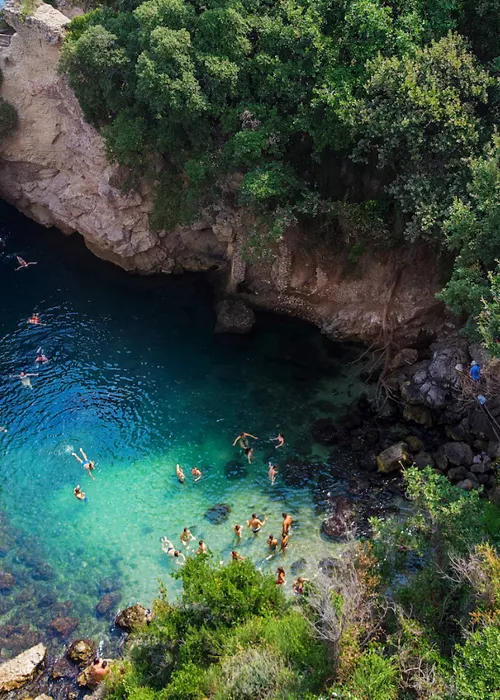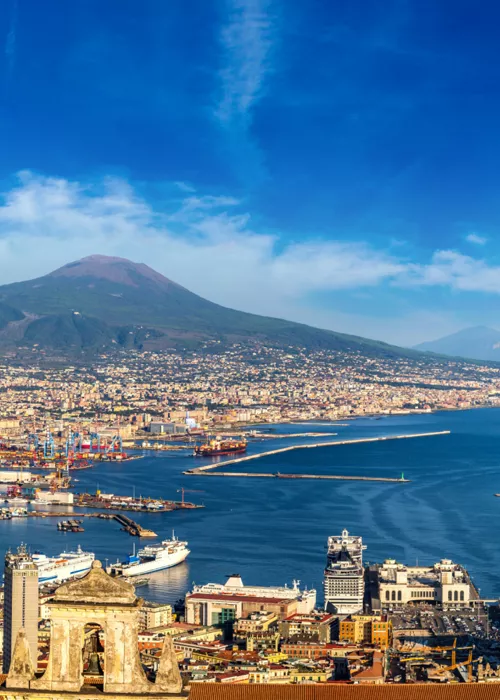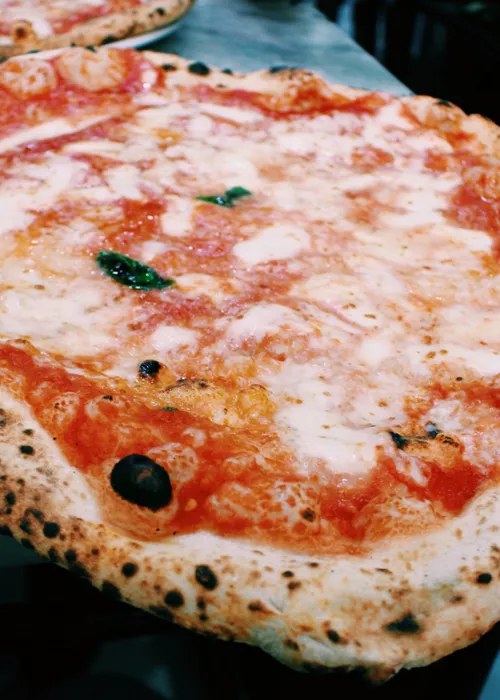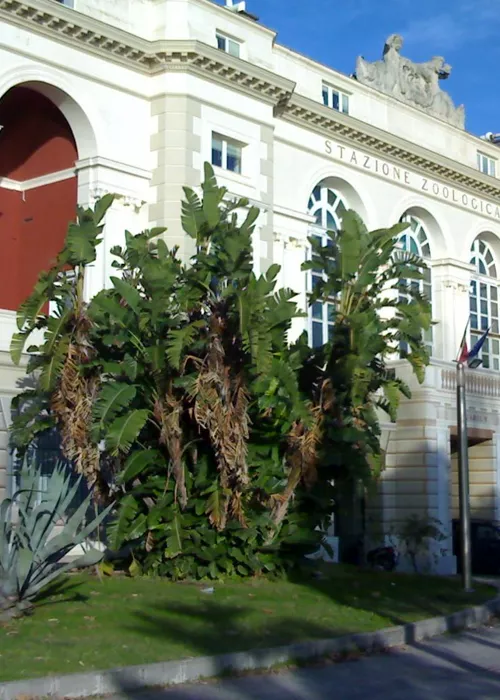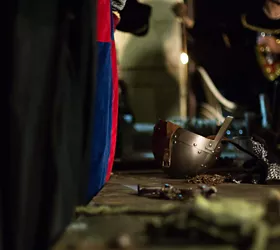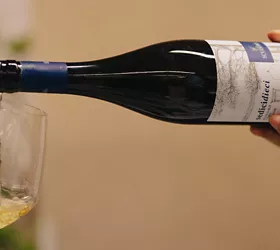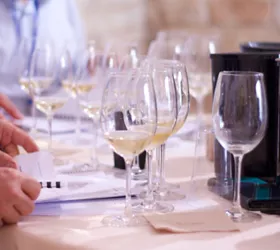The Riardo castle and bubbling springs
As one of the most enchanting villages in Alto Casertano and an important stop along the Southern Via Francigena, Riardo is a small mountain town on the northern slope of Monti Trebulani, dominated by an imposing Longobard castle. Inextricably connected to the town’s destiny since ancient times, the water alone would justify a visit here: in fact, Riardo was already known in Roman times for its naturally effervescent waters, mentioned and appreciated by Vitruvius and Pliny the Elder.
From the manor window
Standing on the hill overlooking the Savone plain and the stream springing from the extinct volcano of Roccamonfina, the Riardo Castle is the town’s main attraction and its extraordinary vantage point. A stone dated 1122 was found near the entrance during past renovations, but the castle's origins stretch even farther into the past, more likely the 9th century when the Castaldei dynasty of Lombard origin decided to build one of the many defensive fortresses of the County of Capua in these areas. The building was enlarged two centuries later, in the Norman era.
The most striking architectural aspect and the castle's highlight is the huge arched window that allows to admire the breathtaking view of the plain below that stretches as far as the sea: don’t miss it.
Another interesting detail is the main tower with its hollow walls and the stairs to the keep inside. A footbridge crosses the gardens on the northern side offering a view, even beyond the town walls, of an equally spectacular panorama.
Once upon a time there were three people from Rieti
A fun historical anecdote the locals have proudly passed on from generation to generation is set precisely in the Riardo castle. It is said to have happened in 1463, in the days when King Ferrante of Aragon besieged Riardo and its castle because its young feudal lord, the Baron Antonio Cristoforo Gaetani, had sided with the Angevins against his accession to the throne of the Kingdom of Naples. The Riardo men fiercely defended themselves, but surrendered after a few days. That is, all except three of them who barricaded themselves in the castle and continued to hurl boulders, decimating the royal troops. The story has it that in order to save time and human losses, the King sought an agreement with the indomitable resistance by promising them salvation and a large sum of money in exchange for surrender. Not trusting him, the three rebels who had single-handedly held an entire army in check also mocked the king, deftly taking the money and disappearing through a secret passage.
Between monuments and sacred places
The historical buildings in Riardo worth visiting include Santa Maria a Salice, the town's mother church that houses the Neapolitan-school statue of Madonna della Stella and the wooden statue of Sant'Antonio Abate donated by Duchess Elena Aldobrandini to the people of Riardo during the plague of 1656. The remains of a valuable series of 14th-century frescoes can be admired under the Gothic-Romanesque arches of the church now dedicated to San Leonardo, with its Catalan Gothic portal.
Another important religious site to visit in Riardo is the Madonna della Stella Sanctuary, which was built in 1952-1962 to extend the ancient chapel dating back to the second half of the first millennium A.D., which still houses medieval frescoes of the Campania school.
The springs of liquid treasure
“Sunt nonnullae acidae venae fontium”: this is what Vitruvius wrote here over 2,000 years ago, meaning some slightly acidic water springs can be found here. He was alluding to the fact that Riardo's greatest wealth lies in its aquifers, in which the naturally effervescent waters flow that are still bottled in the Ferrarelle factory today. The naturally sparkling quality that has made it so popular is due to the fact that it springs from the volcanic rocks of Roccamonfina, from its now dormant crater.
This natural and scenic combination is so special that the Parco delle sorgenti Ferrarelle from which these waters flow has been a FAI Heritage Site since 2011: 135 hectares of unspoilt greenery still hardly touched by mass tourism, which can be visited thanks to an area enhancement project that has planted historical crops, thousands of trees and has restored an ancient farmhouse.
Pick the first apple
And if you still need a reason to visit Riardo, its countryside is part of the production area of the Annurca Campana IGP apple, also known as the “queen of apples”, one of the best-known and most appreciated varieties, a gem among the local food and wine delicacies. Their production is particular in that they are ripened on the ground in so-called “melai”: highly nutritious and rich in vitamins, minerals and fibre, they are ideal for children and the elderly.
To find out more
https://mediovolturno.guideslow.it/localita/riardo/



